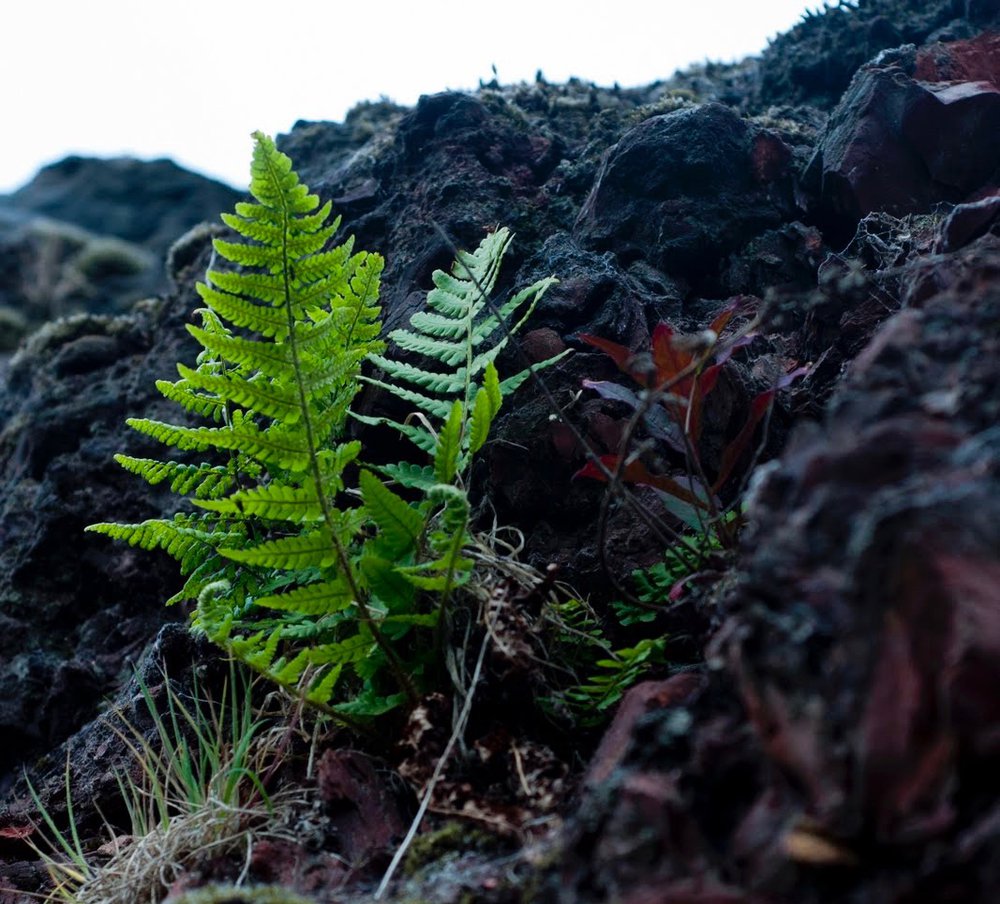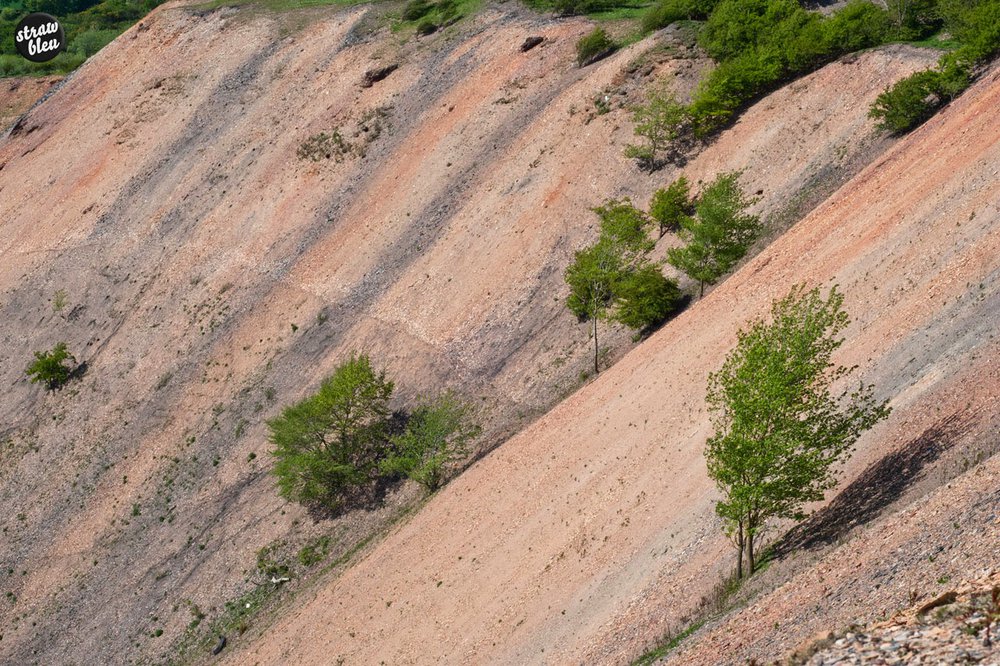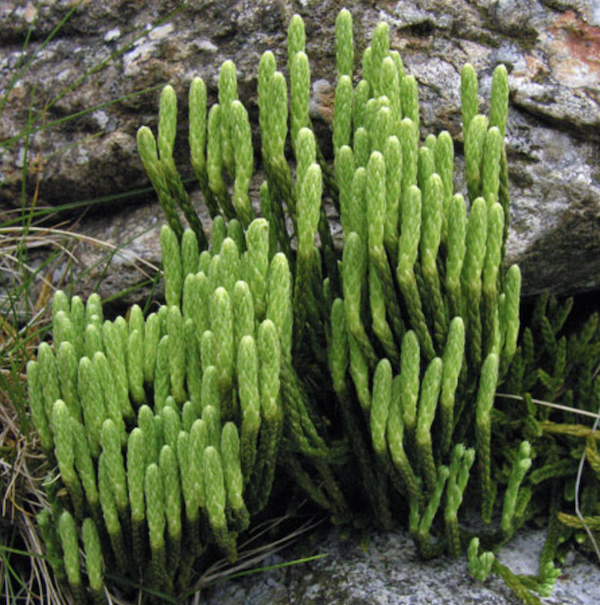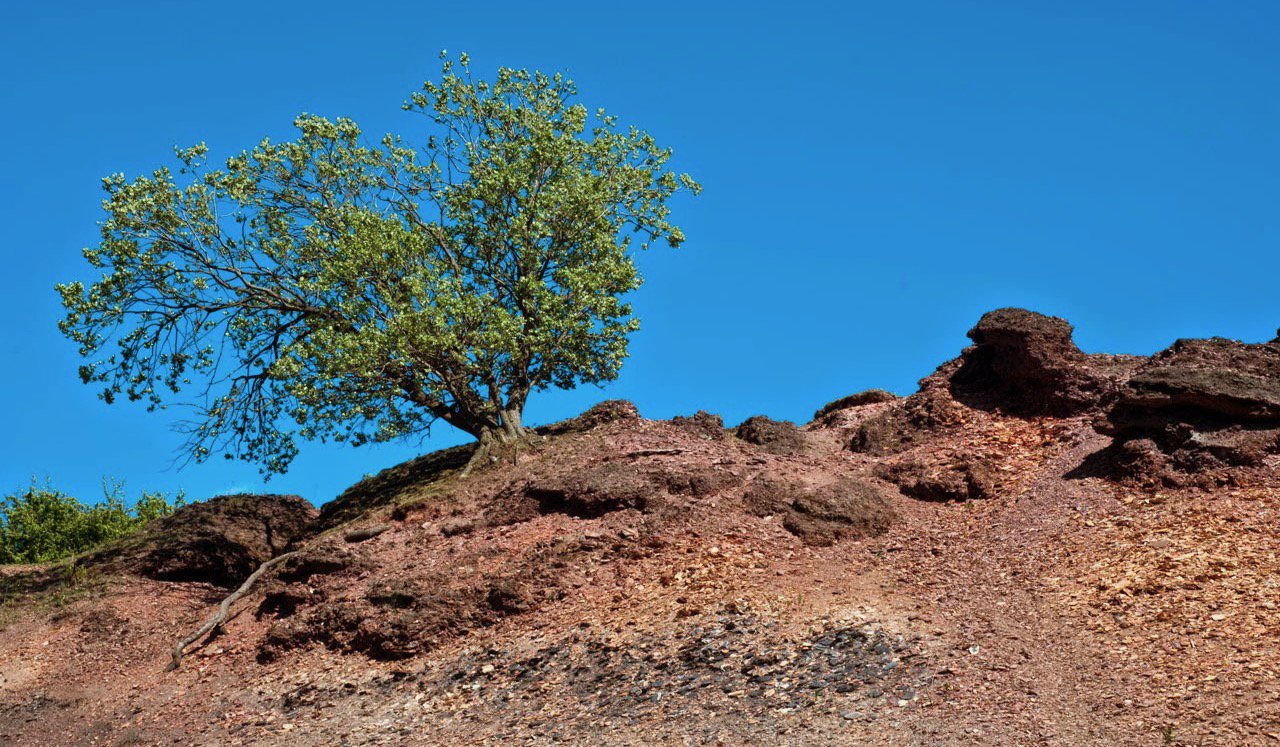The red bings of West Lothian made mountains of money as well as mountains of waste. But what is the value of the bings now?

Ferns are among the early plants to arrive to green the bings. Photo: Jon Eland
Shale bings are like volcanoes in a way. To extract the oil shale was heated to over 700 degrees C, which means that the tipped waste is largely free of impurities and chemically neutral. Very similar to volcanic lava. Ecologically, they are prime habitats, completely bare and pristine, which are very unusual.
If left alone and allowed to develop naturally nearly everywhere in Britain will try to become woodland. Look at a field that is left uncultivated, or a lawn and after a few years you’ll notice that it has become full of rougher, woodier plants. Then trees like birch or willow will appear and gradually it will turn into woodland. This is ecological succession.
Red Shale is slowly turning green

Steeps sided bings are difficult places for trees to get established. Photo: Jon Eland
Red hot shale waste, tipped and left alone for decades is slowly turning green as plants and trees gradually take root. On the bings colonisation is very slow because there is no soil, so the early stages or largely unseen as the shale weathers and breaks down a little through the action of wind, rain, frost. The first greenery to get established are things like mosses, and lichens which help to trap dust and start to build soil. Gradually you’ll see grasses and then trees creeping up the bings.
Bings have gone full circle, providing a place for new growth

Alpine Clubmoss, growing on bings instead of in the Highlands Source: Alpineflowers.com
What does this mean for the value of the bing? The plants that grow on them are often ones which can’t compete in more fertile places. In West Lothian the bings are gradually turning into valuable nature reserves with unusual plants that aren’t found elsewhere.
One of them is the alpine club moss, which is normally found in the Highlands. It is only about 3cm high. 310 million years ago, club mosses were 30m high trees which formed Scottish coal seams. In a way the bings have gone full circle, providing a place for new growth.













